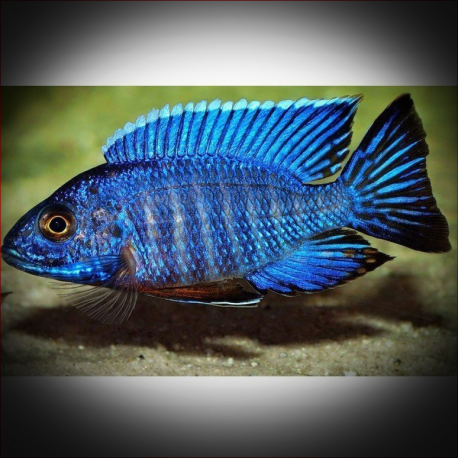More info
Datasheet
| Minimum Tank Size | 225 litres / 59.44 US gallons |
| Maximum Size | 17.8cm / 7.01inches |
| Temperament | Semi-aggressive |
| Care Description | Easy |
| Temperature | 24.4°C / 75.92°F - 27.8°C / 82.04°F |
| Carbonate Hardness | 10-15 |
| pH | 7.8-8.6 |
General Description
The Blue Peacock Cichlid, scientifically known as Aulonocara nyassae, hails from the rocky and sandy shores of Lake Malawi in Africa. Typically, males display vibrant hues ranging from bright yellow to metallic blue, while females exhibit more subdued tones of brown to gray.
Aquarium Setup
For the Blue Peacock Cichlid, an aquarium of at least 55 gallons is recommended, along with ample rocks to define territories and a sandy substrate. Although males can be aggressive, especially towards their own kind when defending their territories, maintaining a ratio of 3 to 4 females per male can help alleviate aggression.
Behaviour
These cichlids tend to be semi-aggressive, with males intensifying their colors and temperaments during breeding periods. It is advisable to provide multiple females for a male during breeding to distribute the stress associated with egg-carrying. Incubation of the eggs typically takes around three weeks before the female releases the fry.
Feeding and Diet
Being carnivorous, the Blue Peacock Cichlid thrives on a diet consisting of a variety of meaty and vegetable-based foods. Feeding options include live and frozen brine shrimp, Spirulina-based flakes, and pellet foods to ensure a balanced nutritional intake.
Reproduction & Dimorphism
During breeding, the male's colors become more pronounced, particularly the yellow hues, and their demeanor becomes more aggressive. To support successful breeding, ample females should be provided to reduce female stress. After incubation, the fry can be nourished with newly hatched brine shrimp and finely ground flake food.
Habitat and Distribution
In the wild, the Blue Peacock Cichlid inhabits the waters of Lake Malawi, Africa, where it seeks out rocky and sandy areas along the shores. Its natural habitat influences its need for a well-structured aquarium resembling the rocky terrain of its native environment.

